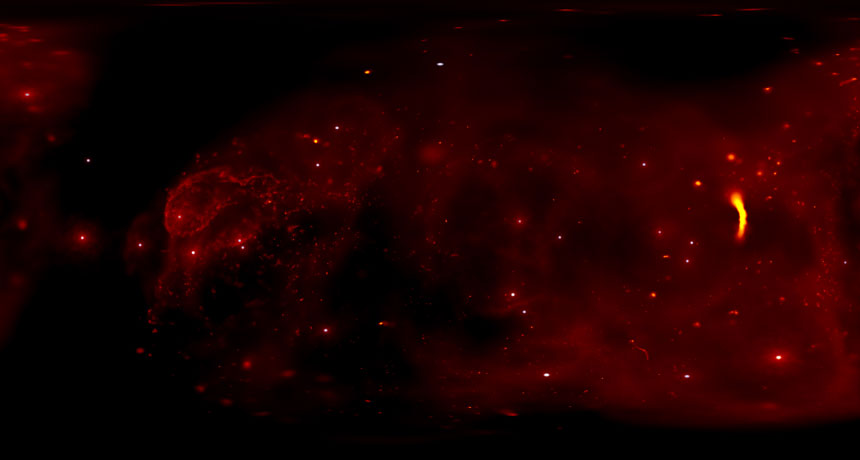See a 360-degree visualization of the center of the Milky Way

GALACTIC CENTER Stars (white) and clumps of gas (red) can be seen in this image from a 360-degree visualization of the center of the Milky Way. Gas clumps near the galaxy’s black hole are stretched by gravitational forces (orange smear).
C. Russell et al./Pontifical Catholic Univ. of Chile, CXC/NASA







